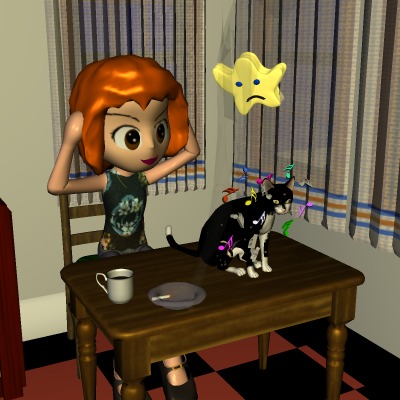Saturday, October 31, 2009
Shep, OAE, Halloween

Oddly enough, two weeks after I rather clunkily and arbitrarily connected Jean Shepherd with my magnum opus, I've found a Shep program from 1965 that makes a very direct connection.
In this 7-minute segment Shep expounds on the mysterious case of Dorian Ficadero of Miami. Ficadero suffered a concussion and then started to hear strange noises in his head. Squishes, howls, sirens, bells. Nothing mysterious so far: tinnitus is common, well-known, and sometimes triggered by a concussion. (Comedians have made good use of punch-drunk boxers hearing bells.) The mysterious part was that Ficadero's noises were audible from the outside, up to ten feet away. Shep builds this into a thoroughly scary story, appropriate for today.
For some reason the phenomenon didn't get noticed by scientists until 1978. By now it's been labeled as Oto-Acoustic Emissions and studied quite extensively, making it vastly duller than Shep's version. OAE turns out to be almost universal. Only a few people emit loud squishes and sirens like Ficadero, but every functional ear puts out very faint sounds in response to what it's hearing at the time. Thus OAE has become a valuable tool for studying the inner workings of the auditory system. It's especially useful with patients who are unresponsive, either because of physical limitations or because they're trying to establish a false insurance claim for hearing loss. OAE, properly measured, gives a good sense of what the ear is actually detecting.
I became familiar with OAE while doing electronics work for a prof at KU who was among the first to explore it; then I devoted two chapters of Audin (Lessons 701 and 702) to OAE, using it as an introduction to the inner ear.

Oddly enough, two weeks after I rather clunkily and arbitrarily connected Jean Shepherd with my magnum opus, I've found a Shep program from 1965 that makes a very direct connection.
In this 7-minute segment Shep expounds on the mysterious case of Dorian Ficadero of Miami. Ficadero suffered a concussion and then started to hear strange noises in his head. Squishes, howls, sirens, bells. Nothing mysterious so far: tinnitus is common, well-known, and sometimes triggered by a concussion. (Comedians have made good use of punch-drunk boxers hearing bells.) The mysterious part was that Ficadero's noises were audible from the outside, up to ten feet away. Shep builds this into a thoroughly scary story, appropriate for today.
For some reason the phenomenon didn't get noticed by scientists until 1978. By now it's been labeled as Oto-Acoustic Emissions and studied quite extensively, making it vastly duller than Shep's version. OAE turns out to be almost universal. Only a few people emit loud squishes and sirens like Ficadero, but every functional ear puts out very faint sounds in response to what it's hearing at the time. Thus OAE has become a valuable tool for studying the inner workings of the auditory system. It's especially useful with patients who are unresponsive, either because of physical limitations or because they're trying to establish a false insurance claim for hearing loss. OAE, properly measured, gives a good sense of what the ear is actually detecting.
I became familiar with OAE while doing electronics work for a prof at KU who was among the first to explore it; then I devoted two chapters of Audin (Lessons 701 and 702) to OAE, using it as an introduction to the inner ear.
